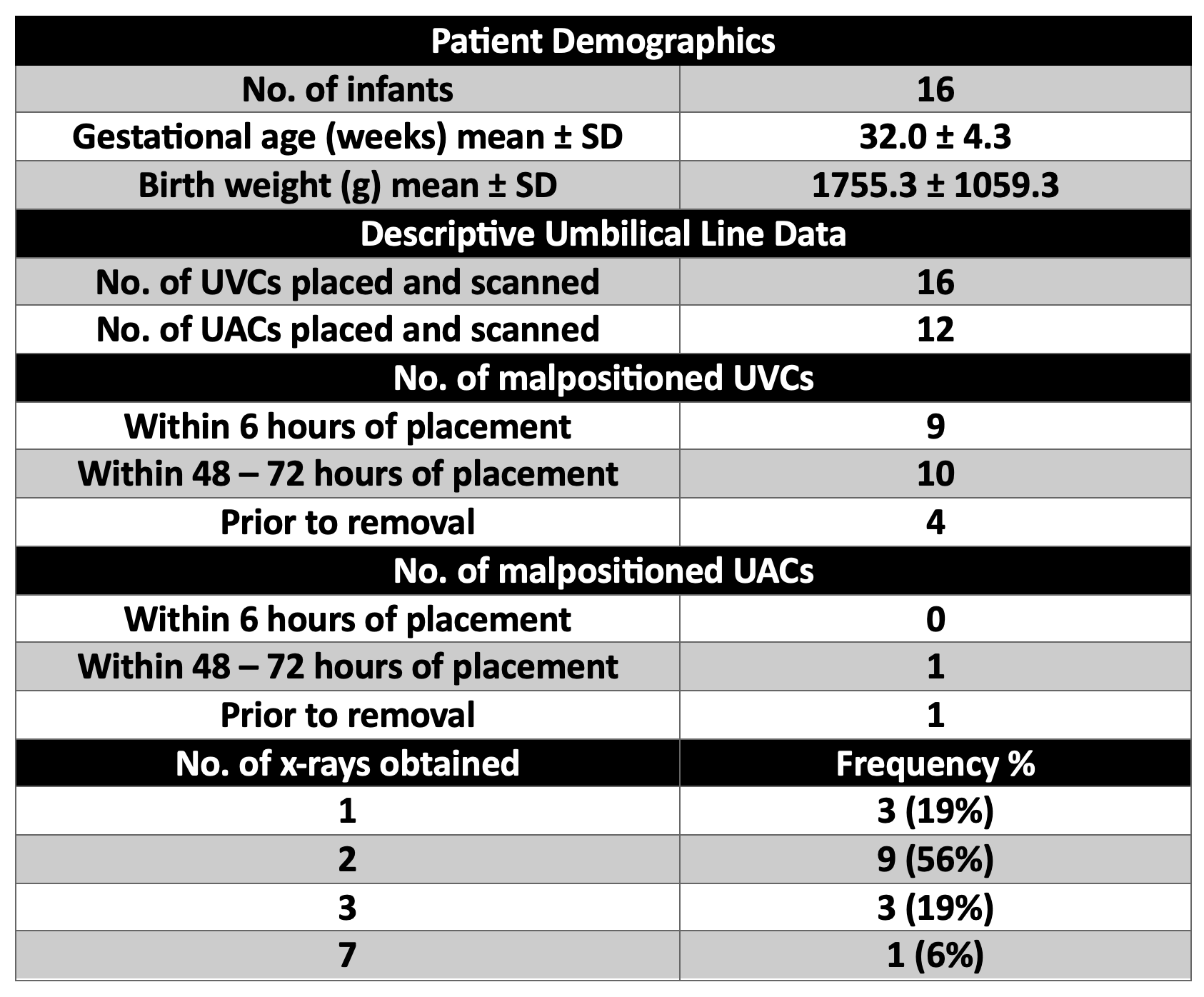Neonatology
Session: Neonatal Quality Improvement 5
76 - Evaluation of Umbilical Catheter positioning using Point of Care Ultrasound in the NICU
Monday, May 6, 2024
9:30 AM - 11:30 AM ET
Poster Number: 76
Publication Number: 76.3171
Publication Number: 76.3171

Amee A. Amin, MD (she/her/hers)
Neonatal - Perinatal Medicine Fellow
Texas Children's Hospital / Baylor College of Medicine.
Houston, Texas, United States
Presenting Author(s)
Background: Placement of central catheters in the umbilical artery (UAC) and vein (UVC) is a standard procedure in Neonatal Intensive Care Units (NICU) across the country. The standard practice to evaluate umbilical line positioning is via anterior – posterior radiograph (X-ray). Misplacement, both during initial placement and subsequent line migration can lead to severe complications and increased morbidity (e.g. pericardial effusion, cardiac tamponade, pleural effusion, thrombosis, cardiac arrhythmias, liver hematoma, portal hypertension etc.) and mortality. Several studies have questioned the ability of an X-ray to accurately evaluate the catheter tip position and have concluded that Ultrasound (US) is superior to X-ray at determining central line tip position. Furthermore, a standardized practice to evaluate for umbilical line migration throughout the duration of the line is lacking.
Objective: To evaluate the rate of malpositioned umbilical lines placed under our current standard procedure guidelines and to determine the umbilical lines migration rate using Point of Care ultrasound (POCUS).
Design/Methods: Baylor College of Medicine IRB approved and exempted consent for this QI study. Inborn preterm and term infants at Texas Children’s Hospital were enrolled. A trained ultrasound specialist performed POCUS scans at three-time intervals: 1) within 6 hours of line placement, 2) at 48 - 72 hours of line placement and 3) prior to line removal to monitor line position and identify mal positioned or migrated lines from the previous scan. All babies were deemed clinically stable for the US scan by the primary team. Data collection included gestational age (GA), birth weight (BW), type of line, mode of respiratory support and day/time and reason for line removal.
Results: Sixteen newborns, average GA 32 weeks and BW of 1755.3g were enrolled. A total of 16 UVCs and 12 UACs were placed. Number of malpositioned lines at each time interval are depicted in Table 1. Rate of malpositioned UVC was 23/38 (60.5%) versus 2/20 (10%) for UAC (p < 0.001) with no significant associations observed between line malposition and reason for line removal or infant’s mode of respiratory support. The average number of x-rays for line placement per newborn was 1.9 with an average of 0.6 (range 0 – 4) manipulations.
Conclusion(s): POCUS is an emerging, non-invasive, and safe modality in the NICU to evaluate the position of central umbilical catheters and detect line migration in a timely manner. UVCs are at higher risk for line migration than UACs.

.png)
